Choosing the Right Pallet Inverter for Mexico's Demands in Border Trade Packaging Compliance and Traceability
Are you managing a manufacturing or logistics operation in Mexico? You likely face constant pressure from cross-border trade regulations. A single damaged pallet or a simple compliance error can lead to costly delays at the border. Shipments can be rejected, hurting your bottom line and your reputation with customers. This isn't just a minor issue; it's a critical weakness in your supply chain that can halt your entire operation.
The best pallet inverter for meeting Mexico's border trade demands is a robust, reliable machine that ensures packaging compliance and improves traceability. It must handle heavy loads safely, allow for quick swaps to ISPM 15-compliant pallets, and provide easy access to every product for scanning and inspection. This turns a major logistical bottleneck into a streamlined, efficient part of your operation, directly supporting smoother cross-border commerce.
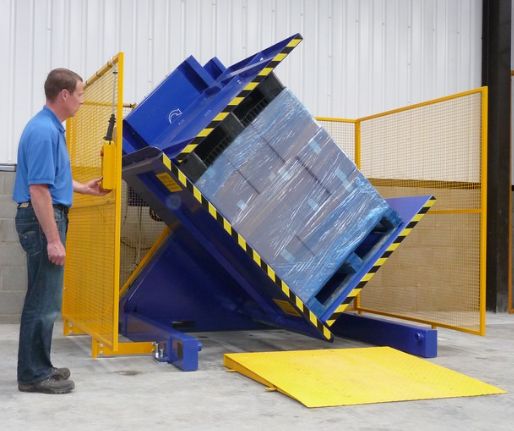
I have spent my entire career in the packaging machine industry. I started on the factory floor and eventually built my own company, SHJLPACK. I have seen firsthand how a seemingly small piece of equipment can have a huge impact on a company's success. For business leaders in Mexico, especially in demanding sectors like the steel industry, the challenges of border trade are very real. Let's explore how the right pallet inverter is not just a piece of machinery, but a strategic tool for success.
Why is a Pallet Inverter Crucial for Mexico's Cross-Border Steel Trade?
Your steel products are ready for shipment. Your trucks are lined up. But a customs agent at the US border stops your entire shipment. The reason? The wooden pallets you used were not properly treated and stamped according to international law. Now you face delays, potential fines, and an unhappy client. This single, preventable issue disrupts your carefully planned logistics and erodes your profit margins.
A pallet inverter is crucial for Mexico's cross-border steel trade because it directly solves this problem. It allows you to use durable, reusable pallets within your facility and then quickly and safely switch to new, ISPM 15-compliant wood pallets just for shipping. This simple step ensures every shipment meets strict international phytosanitary standards, preventing costly rejections and delays at the border.
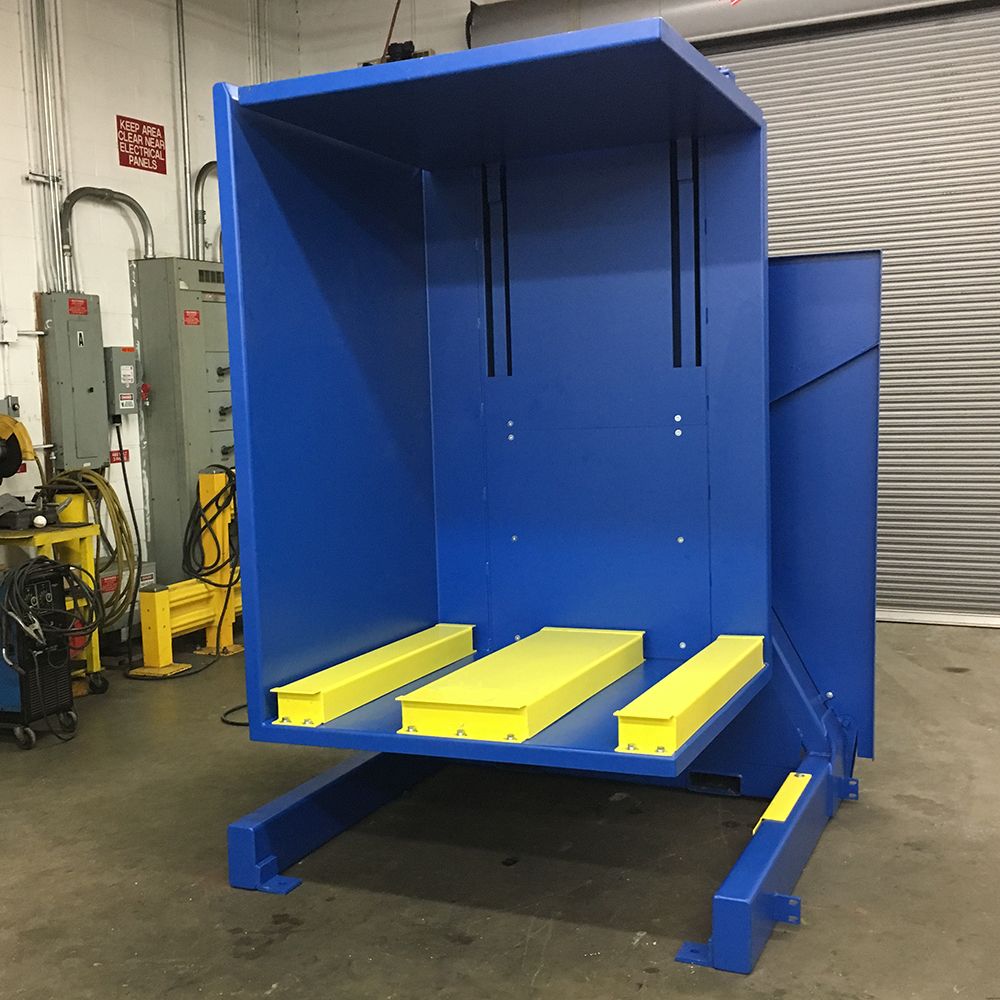
I want to dive deeper into this topic. It’s about more than just switching wood. It’s about managing risk, cost, and efficiency in a high-stakes environment. For a steel mill owner like Javier Morales, who deals with heavy products and tight margins, these details matter.
The ISPM 15 Compliance Bottleneck
International Standards for Phytosanitary Measures No. 15 (ISPM 15) is a set of rules created to stop the spread of pests and diseases through wood packaging materials used in international trade. This means any wood pallet crossing a border, like the one between Mexico and the United States, must be heat-treated or fumigated and then stamped with an official mark. There are no exceptions. If an inspector finds a pallet without the correct stamp, or a stamp that is unreadable, they have the authority to quarantine or even destroy the entire shipment at your expense.
A pallet inverter offers a simple, powerful solution. Inside your steel mill, you can use more durable and cost-effective pallets made of plastic or steel. These pallets can last for years, reducing your operational costs. When a load is ready for export, you move it to the dispatch area. The pallet inverter then takes the entire load, securely clamps it, rotates it, and allows you to remove the in-house pallet and replace it with a brand new, certified ISPM 15 wood pallet. The entire process takes only a few minutes. This strategy separates your internal logistics from your external shipping requirements, ensuring 100% compliance without sacrificing the quality of your internal pallet fleet.
Protecting Product Quality and Worker Safety
Steel products are heavy and dense. A pallet of steel coils or wire can weigh several tons. During transport, the pallet underneath takes a huge amount of stress. A weak or damaged pallet can collapse, leading to product damage and a significant financial loss. Manually re-stacking a ton of steel to inspect or replace a bottom pallet is not just inefficient; it's extremely dangerous.
A pallet inverter mechanizes this entire process. It allows your team to inspect the condition of the shipping pallet just before it leaves your facility. More importantly, it allows you to check the condition of the products at the bottom of the stack. You can identify and remove any damaged goods before they are sent to the customer. This proactive quality control reduces customer complaints and protects your reputation. It also eliminates the risk of injuries associated with manual handling of heavy, unstable loads. For a CEO concerned with both production quality and workforce safety, this is a clear win. The machine does the heavy lifting, your people stay safe, and your product arrives in perfect condition.
How Can a Pallet Inverter Enhance Packaging Compliance and Traceability?
You have a complex order for a major automotive client. They require full traceability, meaning every single coil of wire needs a unique barcode, and that barcode must be scanned before shipment. The problem is, half of those barcodes are on the bottom or in the middle of a fully stacked pallet. Your team has to manually unstack the entire pallet to scan everything, a process that is slow, prone to error, and risks damaging the product.
A pallet inverter enhances packaging compliance and traceability by giving you complete, 360-degree access to every item on a pallet. Instead of manual unstacking, the machine safely inverts the load. This allows your staff to easily apply compliance labels, scan barcodes, and visually inspect goods on all sides. This ensures every unit is accounted for in your system and that all packaging requirements are met perfectly, every single time.
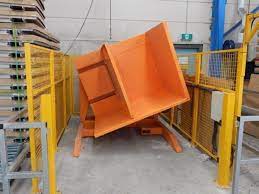
This capability is a cornerstone of modern logistics. For a leader like Javier, who aims to implement a full digital transformation with MES and IoT systems, accurate data is everything. Let's look at how this machine becomes a critical link in that data chain.
Bridging the Physical-to-Digital Gap for Full Traceability
In a modern steel mill, your Manufacturing Execution System (MES) or Warehouse Management System (WMS) is the brain of the operation. It tracks every product from creation to shipment. However, the system is only as good as the data it receives. If a barcode is missed because it was physically inaccessible, your digital record is inaccurate. This creates a gap between your digital inventory and your physical reality, which can lead to major problems.
A pallet inverter closes this gap. It acts as a physical tool that enables perfect data capture. Before a pallet is wrapped and shipped, it can be taken to an inverter. The load is rotated 90 or 180 degrees, exposing every single box, coil, or item. An operator with a scanner can then quickly and accurately capture the data from every unit. This ensures that the digital record in your MES is a 100% perfect match of the physical shipment. This level of accuracy is no longer a luxury; for industries like automotive or aerospace, it is a strict requirement from the customer.
Simplifying Complex Labeling and Quality Checks
Different customers and countries have unique labeling requirements. One customer might require a specific label on the north and west faces of the pallet. Another might require a quality control sticker on every single box. Applying these labels correctly on a fully stacked pallet is nearly impossible without de-stacking it.
The pallet inverter makes this process simple and error-proof. The process looks like this:
- The full pallet is loaded into the inverter.
- The machine clamps and rotates the load 90 degrees.
- The operator applies all necessary labels to the now-exposed side.
- The machine rotates the load another 90 degrees.
- The operator applies labels to the next side.
This systematic approach eliminates guesswork and ensures that every single shipment complies with customer-specific packaging instructions. It also provides a perfect opportunity for a final quality control check. You can visually inspect for damage, confirm product types, and even pull a sample for testing if needed, all without disturbing the stability of the stack.
| Task | Manual Process | Process with Pallet Inverter |
|---|---|---|
| Traceability Scan | Unstack pallet item by item. Scan each one. Restack pallet. | Invert pallet. Scan all items. Return pallet to original position. |
| Time Taken | 30-45 minutes | 3-5 minutes |
| Labor Required | 2-3 workers | 1 worker |
| Risk of Injury | High (lifting, repetitive motion) | Low (machine does the work) |
| Risk of Product Damage | High (dropping, incorrect stacking) | Very Low (load is secure) |
| Compliance Labeling | Difficult and inconsistent | Easy and 100% consistent |
What Key Features Should a Steel Mill CEO in Mexico Look For in a Pallet Inverter?
You've decided that a pallet inverter is the right solution for your steel mill. But you know that not all industrial equipment is created equal. Buying a machine that is designed for a food warehouse and putting it in the harsh environment of a steel mill is a recipe for disaster. The dust, the heavy loads, and the demanding pace will cause an undersized machine to fail quickly, wasting your investment and causing even more downtime.
A steel mill CEO in Mexico should look for a pallet inverter with specific features designed for a heavy-duty environment. The top priority is a high load capacity that safely exceeds your heaviest pallet. The machine must have a robust, all-steel construction. Critically, it needs to have a finely adjustable clamping pressure system to hold heavy steel coils securely without crushing or damaging them. Finally, comprehensive safety features like light curtains and physical guarding are not optional; they are essential.
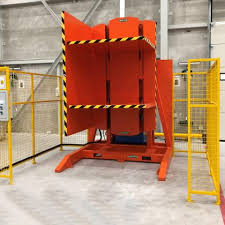
As an engineer, I know that the details of construction are what separate a machine that lasts for 20 years from one that lasts for two. When advising a client like Javier, with his own engineering background, I emphasize that he must look beyond the sales brochure and scrutinize the machine's core design.
Robust Construction and True Load Capacity
The environment in a steel mill is tough. There's dust, temperature fluctuations, and the occasional impact from a forklift. A pallet inverter for this setting needs to be built like a tank. Look for machines with a thick, welded steel plate frame, not a bolted one. Ask the manufacturer about the quality of the hydraulic components and the power of the electric motor. These are the heart and lungs of the machine.
Most importantly, understand the "load capacity." A machine rated for 2,000 kg should be able to handle that weight cycle after cycle, year after year, without strain. A good manufacturer will build in a significant safety margin. When I design equipment, I think about the worst-case scenario. What is the heaviest, most unbalanced load you will ever need to handle? The machine must be rated to handle more than that. This robust design philosophy prevents premature wear and tear and aligns with the goal of reducing equipment failures and increasing operational uptime.
Precision Control: The Key to Handling Valuable Products
Handling steel coils or high-tensile wire is a delicate balance. If you don't clamp the load with enough pressure, it can shift during rotation, causing a catastrophic failure. If you clamp it with too much pressure, you can deform the coils or damage the product, making it worthless. This is why a simple on/off clamping system is not good enough for a steel mill.
You must look for a pallet inverter with a highly responsive and adjustable hydraulic clamping system. The operator should be able to set the clamping pressure precisely based on the product being handled. Modern systems use pressure regulators and gauges that allow for repeatable, accurate settings for different load types. Some advanced machines can even store pressure "recipes" in their PLC controller for different products. This feature is critical for meeting the goal of maintaining high product quality while reducing waste and damage. It transforms the machine from a blunt instrument into a precision tool.
| Feature Checklist for a Steel Mill Pallet Inverter | Why It's Important for a CEO |
|---|---|
| Load Capacity > 2,000 kg | Ensures safety and longevity when handling heavy steel products. |
| Welded Steel Plate Frame | Provides structural integrity needed for the harsh mill environment. |
| Adjustable Hydraulic Clamping | Prevents product damage (crushing) and ensures load stability. |
| Safety Light Curtains/Guarding | Protects workers and is essential for meeting modern safety standards. |
| PLC Controls with Automation Options | Allows for integration into a digital factory (MES/WMS) and reduces human error. |
| Easy Access for Maintenance | Minimizes downtime and supports predictive maintenance goals. |
How Does a Pallet Inverter Integrate into a Digitally Transformed Steel Mill?
You are investing heavily in a digital transformation for your steel mill. You're deploying MES software, installing IoT sensors on your production lines, and building data analysis platforms. But then you look at your shipping department, and you see people with clipboards and manual processes. This creates a critical disconnect. Your expensive digital systems are starved of accurate, real-time data from the final, most crucial stage of your process: dispatch.
A modern pallet inverter integrates into a digitally transformed steel mill by acting as a smart, connected device. It becomes a key data point in your digital ecosystem. Equipped with sensors and a PLC controller that can communicate with your network, it can automatically signal the completion of a pallet swap, confirm that all products have been scanned for traceability, and feed real-time operational data into your MES. It bridges the gap between physical logistics and your digital platform.
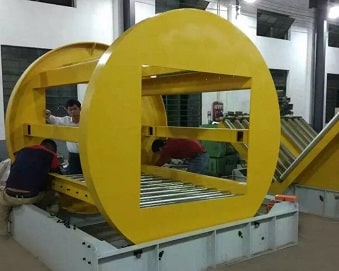
This integration is where a simple machine becomes a strategic asset. For a forward-thinking leader like Javier, whose goals include 95% capacity utilization and full production visualization, this is a vital concept. The machine isn't just turning pallets; it's generating valuable data.
The Pallet Inverter as a Smart, Connected IoT Device
Think of a modern pallet inverter not just as a piece of mechanical equipment, but as an Industrial Internet of Things (IIoT) device. It can be outfitted with sensors that track key performance indicators.
- Cycle Count: How many pallets has it processed today? This helps measure throughput.
- Operating Hours: How long has the motor been running? This is crucial for scheduling preventive maintenance.
- Fault Codes: If there is a hydraulic pressure drop or a sensor malfunction, the machine can generate a specific fault code.
This data no longer stays on the machine. It is sent over the network to your central maintenance system or MES. Instead of waiting for a machine to break down, your maintenance team gets an alert that says, "Machine #3 has run for 500 hours; it is due for a hydraulic fluid check." This is the foundation of predictive maintenance, a key strategy for achieving the goal of 95% equipment uptime.
Seamless Communication with MES and WMS
Integration goes beyond just sending data; it involves two-way communication. In a fully integrated smart factory, the process can work like this:
- A pallet of steel wire arrives at the dispatch station.
- An operator scans the pallet's master barcode.
- The WMS recognizes the order is destined for the USA and sends a command to the pallet inverter's PLC: "Initiate pallet swap program for ISPM 15 compliance."
- The inverter automatically sets the correct clamping pressure and runs the cycle.
- Once the swap is complete, the inverter's PLC sends a "Task Complete" signal back to the WMS.
- The WMS then clears the pallet for the next stage, which might be an automated stretch wrapper.
This level of automation eliminates human error. The operator doesn't need to remember which orders need a pallet swap or what the correct pressure setting is. The system manages the process, ensuring perfect execution every time. This directly supports the goal of reducing operational costs by improving efficiency and eliminating mistakes. It turns the dispatch area from a potential bottleneck into a smooth, automated, and predictable part of your production line.
My Insight
I've been in this industry a long time, and I remember a conversation with a factory owner in Monterrey. He was a lot like Javier—smart, driven, and an expert in his field of manufacturing. He had optimized every part of his production line and was incredibly proud of his efficiency metrics. But his profits were constantly being chipped away by problems in his shipping bay. A damaged shipment here, a customs delay there, a minor worker injury from manually handling a heavy load. He saw all of this as the unavoidable "cost of doing business."
I told him that this wasn't a cost he had to accept. I explained that a pallet inverter isn't just another machine to maintain. It is a strategic investment in stability and control. For a leader who has mastered complex variables like furnace temperatures and energy consumption, leaving the final step of the process—packaging and dispatch—to chance is like running a perfect race and stumbling right before the finish line.
The challenges a CEO like Javier faces in Mexico are immense: volatile energy costs, aging equipment, and intense pressure from both regulations and customers. A pallet inverter is a tool that directly attacks these problems. It reduces product loss from damage, which saves money. It automates a dangerous manual task, which lowers labor costs and improves safety. And it guarantees packaging compliance, which avoids fines and costly border delays. It turns a chaotic, unpredictable part of your factory into a controlled, efficient, and data-rich operation. For a forward-thinking leader in Mexico's competitive steel industry, the question isn't if you need one, but how quickly you can integrate the right one into your digitally transformed factory.
Conclusion
The right pallet inverter is a strategic asset for Mexican steel mills. It boosts efficiency, ensures compliance, and supports digital transformation, providing a crucial edge in competitive cross-border trade.




